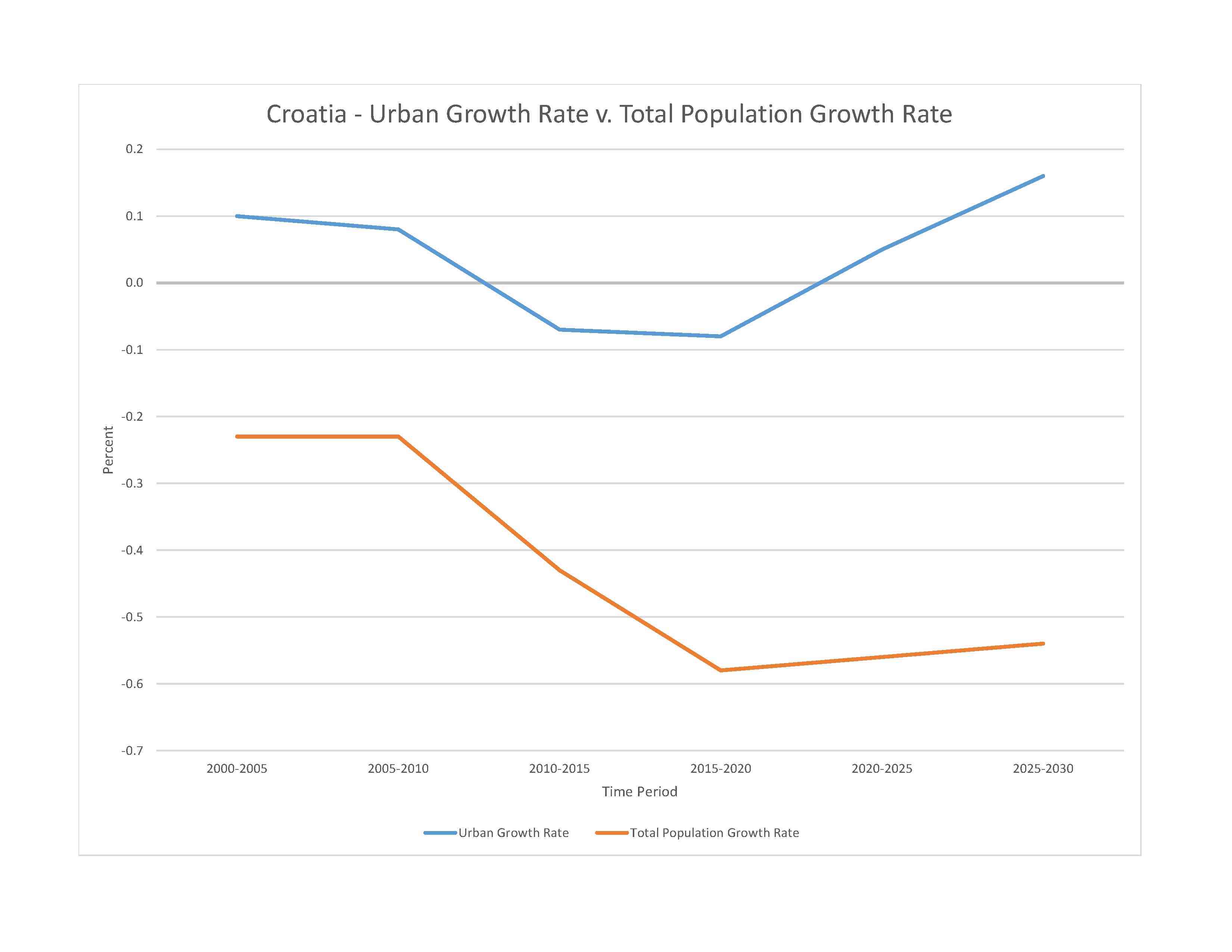
4,169,239 (2023 est.)
noun: Croat(s), Croatian(s)
adjective: Croatian
note: the French designation of "Croate" to Croatian mercenaries in the 17th century eventually became "Cravate" and later came to be applied to the soldiers' scarves - the cravat; Croatia celebrates Cravat Day every 18 October
Croat 91.6%, Serb 3.2%, other 3.9% (including Bosniak, Romani, Albanian, Italian, and Hungarian), unspecified 1.3% (2021 est.)
Croatian (official) 95.6%, Serbian 1.2%, other 3% (including Hungarian, Czech, Slovak, and Albanian), unspecified 0.2% (2011 est.)
major-language sample(s):
Knjiga svjetskih činjenica, nužan izvor osnovnih informacija. (Croatian)
The World Factbook, the indispensable source for basic information.
Croatian audio sample:
Roman Catholic 79%, Orthodox 3.3%, Protestant 0.3%, other Christian 4.8%, Muslim 1.3%, other 1.1%, agnostic 1.7%, none or atheist 4.7%, unspecified 3.9% (2021 est.)
0-14 years: 13.98% (male 300,575/female 282,165)
15-64 years: 63.39% (male 1,319,878/female 1,322,953)
65 years and over: 22.63% (2023 est.) (male 391,632/female 552,036)
total dependency ratio: 56.5
youth dependency ratio: 22.1
elderly dependency ratio: 34.4
potential support ratio: 2.9 (2021 est.)
total: 44.8 years (2023 est.)
male: 42.9 years
female: 46.7 years
-0.47% (2023 est.)
8.6 births/1,000 population (2023 est.)
13 deaths/1,000 population (2023 est.)
-0.3 migrant(s)/1,000 population (2023 est.)
more of the population lives in the northern half of the country, with approximately a quarter of the populace residing in and around the capital of Zagreb; many of the islands are sparsely populated
urban population: 58.6% of total population (2023)
rate of urbanization: 0.05% annual rate of change (2020-25 est.)

684,000 ZAGREB (capital) (2023)
at birth: 1.06 male(s)/female
0-14 years: 1.01 male(s)/female
15-64 years: 1.02 male(s)/female
65 years and over: 0.82 male(s)/female
total population: 0.93 male(s)/female (2023 est.)
29 years (2020 est.)
5 deaths/100,000 live births (2020 est.)
total: 8.6 deaths/1,000 live births (2023 est.)
male: 8.4 deaths/1,000 live births
female: 8.8 deaths/1,000 live births
total population: 77.5 years (2023 est.)
male: 74.4 years
female: 80.8 years
1.46 children born/woman (2023 est.)
0.71 (2023 est.)
N/A
improved: urban: N/A
rural: N/A
total: 100% of population
unimproved: urban: N/A
rural: N/A
total: 0% of population (2020 est.)
7.8% of GDP (2020)
3.47 physicians/1,000 population (2019)
5.5 beds/1,000 population (2017)
improved: urban: 99.5% of population
rural: 98.4% of population
total: 99% of population
unimproved: urban: 0.5% of population
rural: 1.6% of population
total: 1% of population (2020 est.)
degree of risk: intermediate (2023)
vectorborne diseases: tickborne encephalitis
24.4% (2016)
total: 9.64 liters of pure alcohol (2019 est.)
beer: 4.75 liters of pure alcohol (2019 est.)
wine: 3.52 liters of pure alcohol (2019 est.)
spirits: 1.37 liters of pure alcohol (2019 est.)
other alcohols: 0.36 liters of pure alcohol (2019 est.)
total: 36.9% (2020 est.)
male: 37.6% (2020 est.)
female: 36.1% (2020 est.)
N/A
50.8% (2023 est.)
5.5% of GDP (2020 est.)
definition: age 15 and over can read and write
total population: 99.4%
male: 99.7%
female: 99.2% (2021)
total: 15 years
male: 14 years
female: 16 years (2020)
NOTE: The information regarding Croatia on this page is re-published from the 2024 World Fact Book of the United States Central Intelligence Agency and other sources. No claims are made regarding the accuracy of Croatia 2024 information contained here. All suggestions for corrections of any errors about Croatia 2024 should be addressed to the CIA or the source cited on each page.
This page was last modified 04 May 24, Copyright © 2024 ITA all rights reserved.